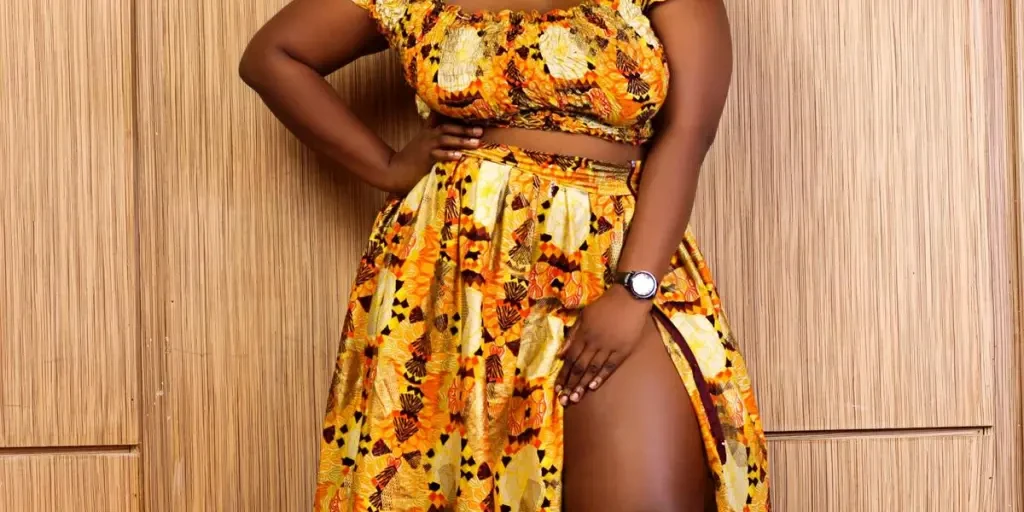Split skirts are making a significant comeback in the fashion world, blending elegance with a touch of daring. This versatile piece is not only a favorite among fashion enthusiasts but also a staple in many wardrobes due to its adaptability and chic appeal. As we delve into the market overview, we will explore the current demand, key players, and regional trends that are driving the popularity of split skirts.
Table of Contents:
-Market Overview
-Current Demand for Split Skirts
-Key Players in the Split Skirt Market
-Regional Trends and Preferences
-Design and Cut: The Art of Split Skirts
-Popular Split Skirt Designs
-The Perfect Cut for Different Body Types
-Materials and Fabrics: Choosing the Best for Split Skirts
-Common Fabrics Used in Split Skirts
-Sustainable and Eco-Friendly Material Options
-Seasonality and Trends: When to Wear Split Skirts
-Seasonal Trends in Split Skirt Fashion
-How to Style Split Skirts for Different Seasons
-Cultural Influence and Heritage: The Story Behind Split Skirts
-Historical Significance of Split Skirts
-Cultural Variations and Modern Adaptations
-Conclusion
Market Overview
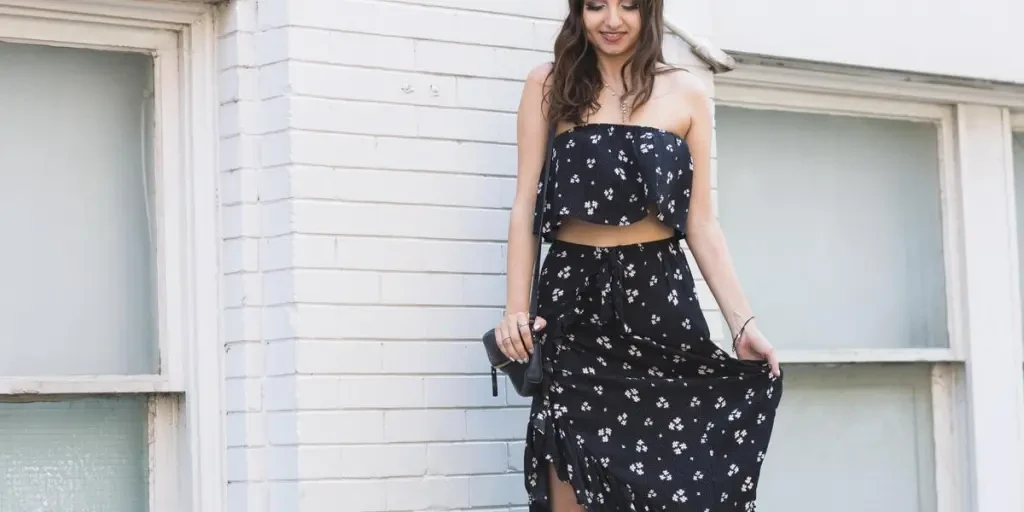
Current Demand for Split Skirts
The demand for split skirts has seen a notable increase in recent years, driven by their versatility and stylish appeal. According to the Buying Director’s Briefing for Women’s Key Items A/W 25/26, split skirts are expected to become a foundational piece in many wardrobes, particularly in the UK and US markets. The report highlights that denim skirts, which often feature frontal slits, are set to grow by +1 percentage point in the UK, with an expected share of 11.9%. This trend indicates a broader acceptance and preference for split skirts among consumers.
The rise in demand can also be attributed to the growing trend of transseasonal fashion, where pieces like split skirts can be styled with various seasonal topweights and core basics. This adaptability makes them a popular choice for both youth and mature consumers, positioning split skirts as a core item in contemporary fashion.
Key Players in the Split Skirt Market
Several key players dominate the split skirt market, each bringing their unique touch to this fashionable piece. Brands like Acne Studios, Dries Van Noten, and Slvrlake Denim are at the forefront, offering innovative designs and high-quality materials that appeal to a wide range of consumers. These brands are known for their sophisticated and contemporary styles, which often feature unique cuts and detailing that set them apart in the market.
In addition to these high-end brands, more accessible fashion labels like Zara and H&M are also capitalizing on the split skirt trend. These brands offer affordable yet stylish options, making split skirts accessible to a broader audience. The combination of high-end and mass-market players ensures that split skirts remain a prominent feature in the fashion landscape.
Regional Trends and Preferences
Regional preferences play a significant role in the popularity and styling of split skirts. In the UK, there is a strong inclination towards denim split skirts, which are seen as a sophisticated yet casual option for everyday wear. The Buying Director’s Briefing for Women’s Key Items A/W 25/26 reports that denim skirts with frontal slits are particularly favored, offering ease of movement and a stylish look.
In contrast, the US market shows a preference for more varied styles, including wrap and midi-length split skirts. According to the Collection Review for Women’s Skirts Pre-Fall 24, wrap styles are growing in popularity, while midi-lengths are seeing a decline. This shift indicates a trend towards more dynamic and versatile skirt designs that can be adapted to different occasions and personal styles.
Overall, the regional trends highlight the diverse appeal of split skirts, with each market embracing different aspects of this fashionable piece. Whether it’s the casual elegance of denim in the UK or the versatile wrap styles in the US, split skirts continue to capture the attention of fashion-forward consumers worldwide.
Design and Cut: The Art of Split Skirts
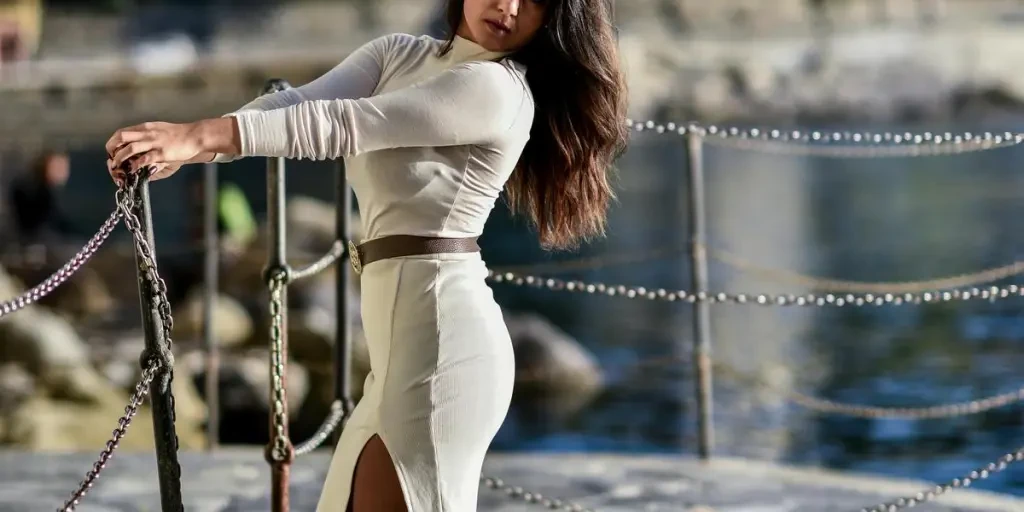
Popular Split Skirt Designs
Split skirts have become a staple in modern fashion, offering a blend of elegance and functionality. The design of split skirts varies widely, catering to different tastes and occasions. One of the most popular designs is the high-slit skirt, which adds a touch of sophistication and allure. This design is often seen in evening wear and formal occasions, where the slit provides a dramatic flair. Another trending design is the asymmetrical split skirt, which features a slit that is not centered but placed at an angle, creating a unique and edgy look. This design is perfect for casual outings and can be paired with a variety of tops and accessories.
The wrap split skirt is another favorite, known for its versatility and comfort. This design features a wrap-around style that can be adjusted to fit different body types, making it a popular choice for many women. The wrap split skirt is often made from lightweight fabrics, making it ideal for summer wear. Additionally, the button-front split skirt has gained popularity, especially in the streetwear scene. This design features a row of buttons along the slit, allowing the wearer to adjust the height of the slit according to their preference.
The Perfect Cut for Different Body Types
Choosing the right cut for a split skirt is crucial to ensure it flatters the wearer’s body type. For those with an hourglass figure, a high-waisted split skirt is ideal as it accentuates the waist and highlights the curves. A-line split skirts are perfect for pear-shaped bodies as they balance out the hips and create a more proportionate silhouette. For those with a rectangular body shape, a wrap split skirt can add definition to the waist and create the illusion of curves.
Petite women can opt for high-slit skirts to elongate their legs and create a taller appearance. On the other hand, taller women can experiment with midi or maxi split skirts, which add elegance and sophistication to their look. It’s important to consider the placement of the slit as well; a side slit can create a slimming effect, while a front slit can add a bold and daring touch to the outfit.
Materials and Fabrics: Choosing the Best for Split Skirts
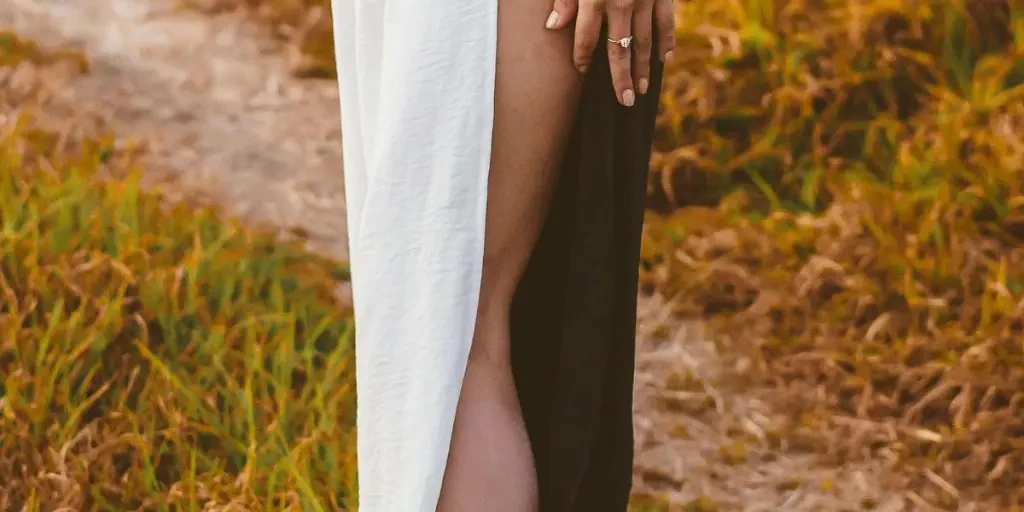
Common Fabrics Used in Split Skirts
The choice of fabric plays a significant role in the overall look and feel of a split skirt. Lightweight fabrics such as chiffon, silk, and satin are commonly used for split skirts, especially for formal and evening wear. These fabrics drape beautifully and add a touch of elegance to the outfit. The flowing maxi skirts constructed from lightweight fabrics ensure a silhouette with plenty of movement, making them a popular choice for spring and summer collections.
For casual and everyday wear, cotton and linen are preferred due to their breathability and comfort. These fabrics are perfect for warmer weather and can be easily styled with various tops and accessories. Denim split skirts are also a popular choice, offering a more rugged and casual look. They are durable and versatile, making them suitable for different occasions.
Sustainable and Eco-Friendly Material Options
With the growing awareness of environmental issues, many designers are now opting for sustainable and eco-friendly materials for their split skirts. Organic cotton, linen, hemp, and nettle are some of the popular choices for eco-conscious consumers. These materials are not only environmentally friendly but also offer durability and comfort. The use of GOTS-certified organic cotton and GRS-certified recycled cotton is becoming increasingly common in the fashion industry, as reported by various design capsules.
Designers are also exploring innovative materials such as Tencel and bamboo, which are known for their sustainability and softness. These materials are biodegradable and have a lower environmental impact compared to conventional fabrics. Additionally, the concept of circular fashion is gaining traction, with designers focusing on creating garments that can be easily disassembled and recycled. This approach not only reduces waste but also promotes a more sustainable fashion industry.
Seasonality and Trends: When to Wear Split Skirts
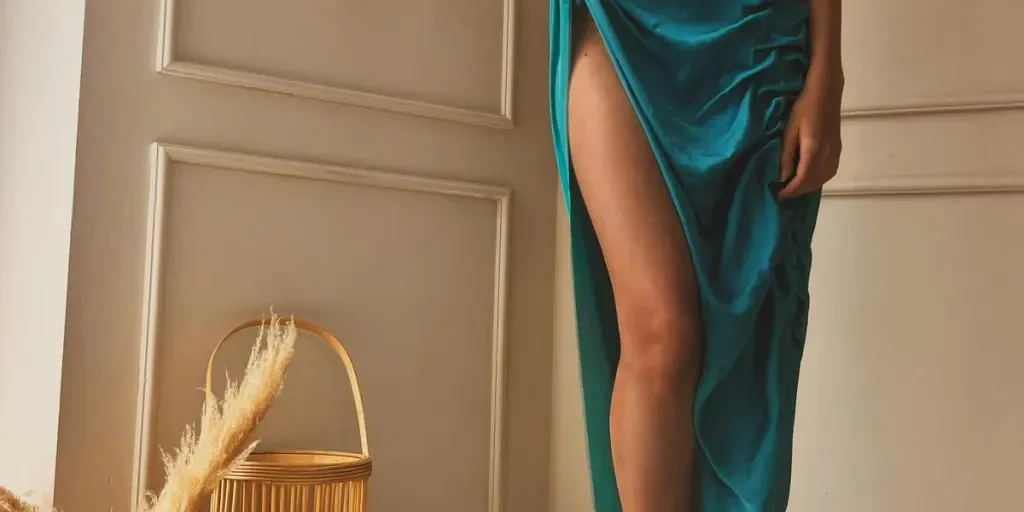
Seasonal Trends in Split Skirt Fashion
Split skirts are versatile and can be worn throughout the year, with different styles and fabrics catering to various seasons. For spring and summer, lightweight and breathable fabrics such as chiffon, silk, and linen are ideal. These fabrics keep the wearer cool and comfortable while adding a touch of elegance to the outfit. Floral prints and pastel colors are popular choices for these seasons, adding a fresh and vibrant look to the split skirts.
In the fall and winter, heavier fabrics such as wool, tweed, and denim are preferred. These fabrics provide warmth and durability, making them suitable for colder weather. Darker colors and earthy tones are popular during these seasons, creating a more sophisticated and cozy look. Layering is also a key trend in fall and winter fashion, with split skirts being paired with tights, boots, and cozy sweaters.
How to Style Split Skirts for Different Seasons
Styling split skirts for different seasons requires a thoughtful approach to ensure the outfit is both fashionable and functional. In the spring and summer, split skirts can be paired with lightweight tops such as tank tops, blouses, and crop tops. Sandals, espadrilles, and sneakers are perfect footwear choices for these seasons, adding a casual and comfortable touch to the outfit. Accessories such as straw hats, sunglasses, and statement jewelry can complete the look.
For fall and winter, split skirts can be styled with cozy sweaters, turtlenecks, and long-sleeve tops. Layering is essential during these seasons, with jackets, coats, and scarves adding warmth and style to the outfit. Boots, whether ankle or knee-high, are the perfect footwear choice for colder weather, providing both comfort and style. Accessories such as beanies, gloves, and statement belts can add a finishing touch to the winter look.
Cultural Influence and Heritage: The Story Behind Split Skirts
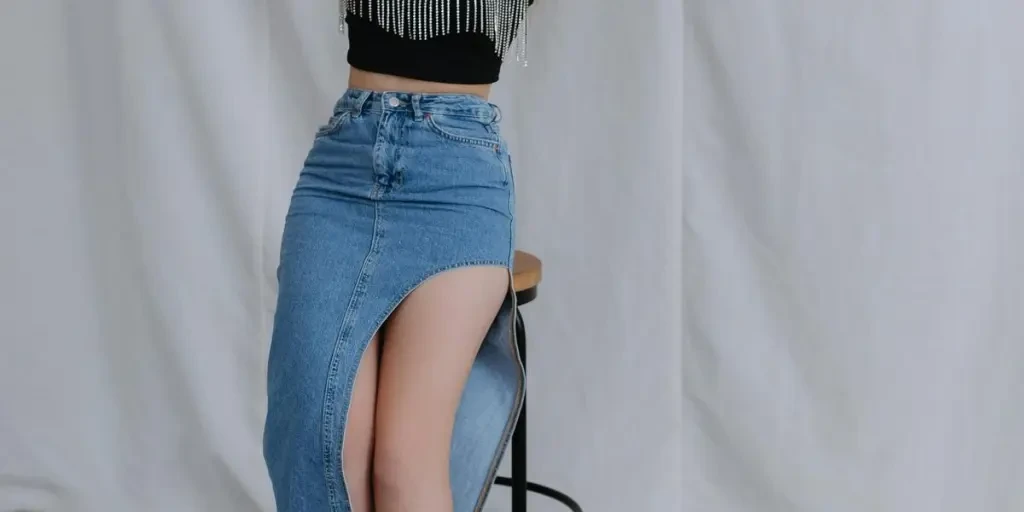
Historical Significance of Split Skirts
Split skirts have a rich history and cultural significance, with their origins dating back to ancient times. Historically, split skirts were worn by both men and women in various cultures, serving both practical and ceremonial purposes. In ancient Rome, for example, split skirts were worn by gladiators to allow for ease of movement during combat. In traditional Chinese culture, split skirts were worn by women as part of their formal attire, symbolizing grace and elegance.
In the 19th and early 20th centuries, split skirts became popular among women as a practical garment for activities such as horseback riding and cycling. These skirts allowed women to engage in physical activities while maintaining modesty and adhering to societal norms. The evolution of split skirts continued throughout the 20th century, with various styles and designs emerging in response to changing fashion trends and cultural influences.
Cultural Variations and Modern Adaptations
Today, split skirts are a global fashion staple, with various cultural influences and modern adaptations shaping their design and popularity. In Western fashion, split skirts are often associated with elegance and sophistication, with high-slit and asymmetrical designs being popular choices for formal and evening wear. In Eastern fashion, split skirts are often seen in traditional attire, such as the cheongsam in Chinese culture and the saree in Indian culture, where the slit adds a touch of modernity to the traditional garment.
Modern adaptations of split skirts have also embraced cultural diversity, with designers incorporating elements such as embroidery, prints, and fabrics from different cultures. The use of sustainable and eco-friendly materials has further enhanced the appeal of split skirts, aligning with the growing demand for ethical and environmentally conscious fashion. As reported by various design capsules, the focus on circular fashion and sustainable practices is driving innovation in the design and production of split skirts, making them a timeless and versatile garment for the modern consumer.
Conclusion
Split skirts have evolved from their historical roots to become a versatile and fashionable garment that caters to various tastes and occasions. With a wide range of designs, cuts, and fabrics, split skirts offer endless possibilities for styling and personalization. The growing emphasis on sustainability and eco-friendly materials is shaping the future of split skirts, making them a responsible and stylish choice for the modern consumer.
